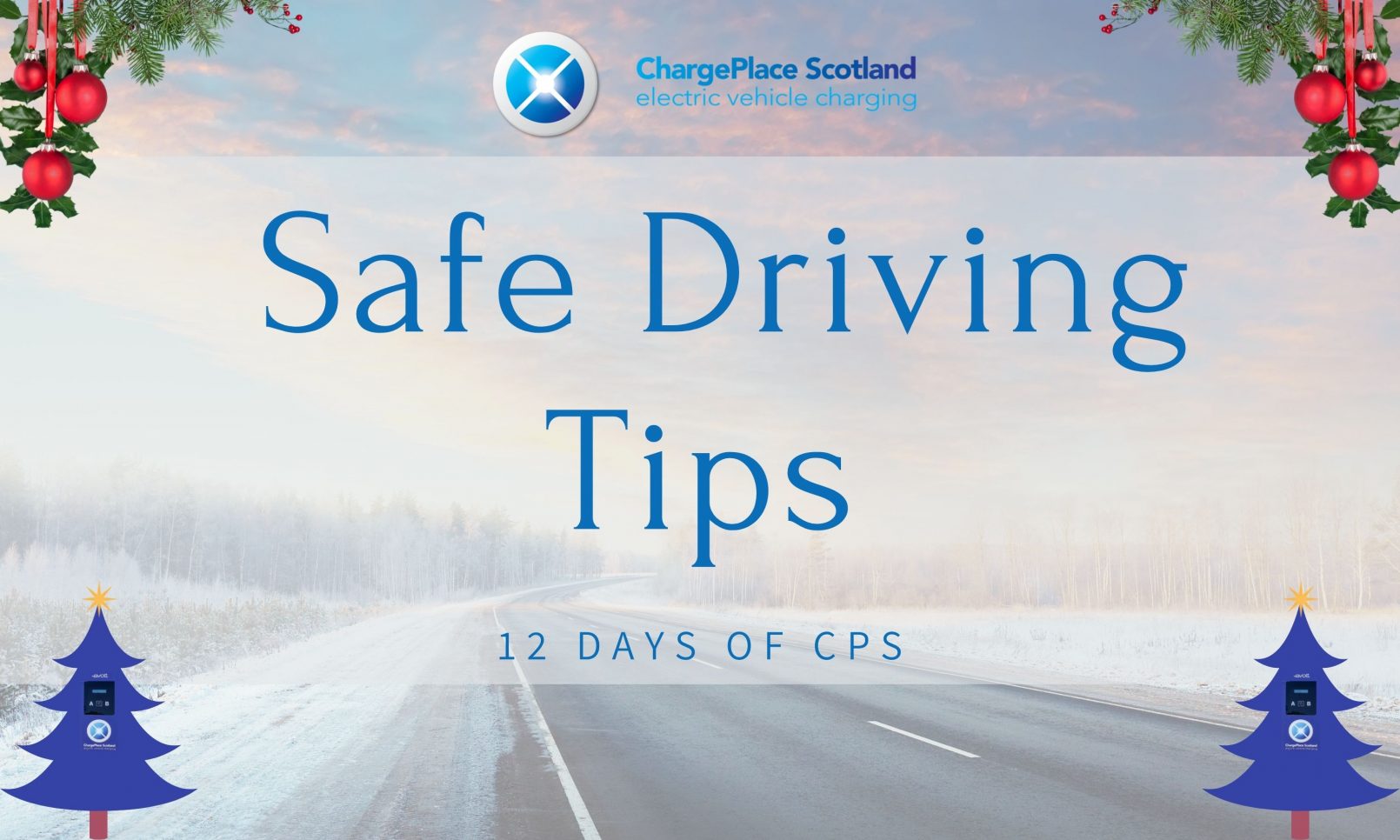Read our top tips and reminders for safe driving practices in the cold and unpredictable Scottish winter.
Slow and Steady
- Take it slow and give people space – stopping times can be up to 10 times longer on the ice.
- Avoid harsh acceleration and braking – if you do happen to skid, steer with two hands in the direction the car wants to go, levelling out as the car straightens up. Remain calm and take your foot off the accelerator to avoid spinning the wheels and gently pump the brake.
Plan ahead
- Check weather forecasts for the planned route and for any travel disruptions – make sure to give yourself plenty of time as to not feel rushed.
- When planning the journey, make use of the ChargePlace Scotland app which shows availability of chargers across the country.
- If the journey is long take regular pit stops to avoid lapses in concentration. It is recommended to take 15 minutes for every 2 hours driven.
Shine bright like a diamond
With shorter days and more chance of rain, sleet and snow, there can often be poor visibility when driving in winter.
- Make sure you use your lights in poor visibility.
- Check all car lights/indicators are working and the lenses are clean from muck.
- Don’t forget to clear your number plate – a fineable offence if deemed undecipherable.
Clear your vehicle
- Keep the windscreen and other windows clear of snow and ice to allow for maximum visibility and to avoid any fines.
- Clear snow from the roof – it can fall onto the windscreen and block your view.
- Air-con demists the screen faster and reduces condensation.
- Replace worn or damaged wiper blades – don’t leave your wipers on auto when you park up if there’s a risk of frost. If the blades freeze to the screen, you could damage the blades or wiper motor when you turn the ignition on.
Choose the right winter tyres
- Check your tyre depth – legal minimum is 1.6mm however it is recommended to aim for a minimum of 4mm to ensure optimum driving conditions.
- Don’t let air out of your tyres to get more grip – it doesn’t work, and it’s unsafe. Typically, tyre pressure should remain between 30-40 psi.
- Consider winter/all season tyres – designed especially for cold and wet conditions.
If you are caught up in the bad weather whilst trying to get your vehicle charged on the ChargePlace Scotland network and require immediate assistance – please give us a call on 0141 648 0750.
